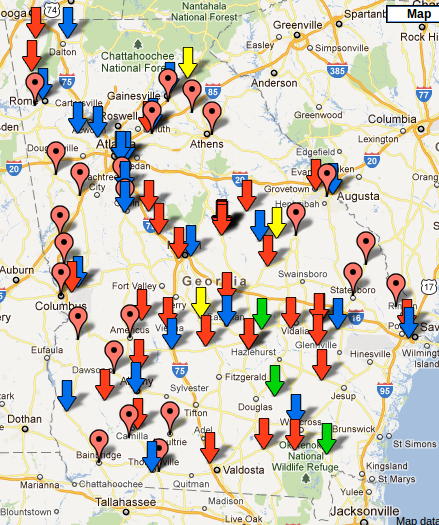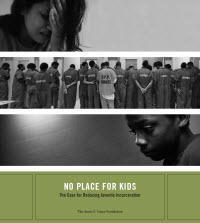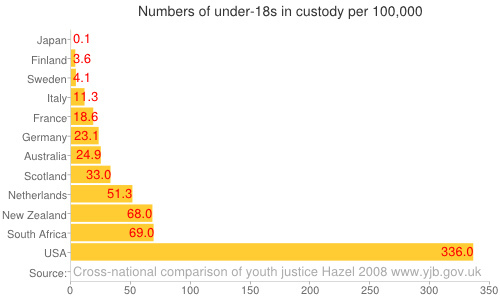The U.S. locks up far more juveniles per capita than any other country, and our country and our state cannot afford that any longer: not economically, and not in the cost of incarceration turning children into criminals.
Pete Brook wrote for Wired 11 April 2012, Uncompromising Photos Expose Juvenile Detention in America,
States have turned away from punishing acts such as truancy and delinquency with detention; acts that are not criminal for an adult but have in the past siphoned youths into the court system. Less detention has been accompanied by less violent crime among youth.
“It may seem counter intuitive, but if you look at the types of offenses for which we’re no longer detaining youth, it is not,” says Sarah Jane Forman, assistant professor at the University of Detroit Mercy School of Law and director of the Youth Justice Clinic which provides legal counsel to indigent youth. “The kids who have committed serious violent crimes; they remain locked up.”
Not only is being locked up ineffective as a deterrent in youths who have not reached full cognitive development and don’t understand the consequences of their actions, it can actually make a criminal out of a potentially law-abiding kid.
The U.S. has far more juveniles per capita locked up than any other country, according to Cross-national comparison of youth justice, by Neal Hazel, 2008, www.yjb.gov.uk.
And Georgia has a large proportion of those locked-up youth.
On this map of prisons in Georgia,
 the blue arrows are Regional Youth Detention Centers (RYDC). The Juvenile-in-Justice website has a geocoded map that shows pictures from several of these Georgia RYDCs.
the blue arrows are Regional Youth Detention Centers (RYDC). The Juvenile-in-Justice website has a geocoded map that shows pictures from several of these Georgia RYDCs.
We can’t afford to lock up so many people anymore, economically, and for other reasons.
Recent economic woes have brought spending on incarceration under scrutiny. The AECF [ Annie E. Casey Foundation] reports that “states face enormous budget deficits and [are] looking for ways to trim spending, highlighting an emerging trend in which at least 18 states have closed more than 50 juvenile corrections facilities over the past four years.”Following repeated abuse scandals in California Youth Authority (CYA) facilities in the ’90s, the Golden State carried out the largest program of decarceration in U.S. history. Reducing its total number of facilities from 11 to 3 and slashing the CYA population by nearly 90 percent, California simultaneously witnessed a precipitous drop in crime committed by under-18s. The AECF identifies this as a common trend.
“States which lowered juvenile confinement rates the most from 1997 to 2007 saw a greater decline in juvenile violent crime arrests than states which increased incarceration rates or reduced them more slowly,” says the report.

That’s right: locking young people up creates crime. Not locking so many of them up reduces crime.
And not locking up so many people costs less, freeing up money that could go towards educating youth instead.
For how to reduce juvenile incarceration, here is a study by the Annie E. Casey Foundation, No Place for Kids: The Case for Reducing Juvenile Incarceration.
-jsq
Short Link:
